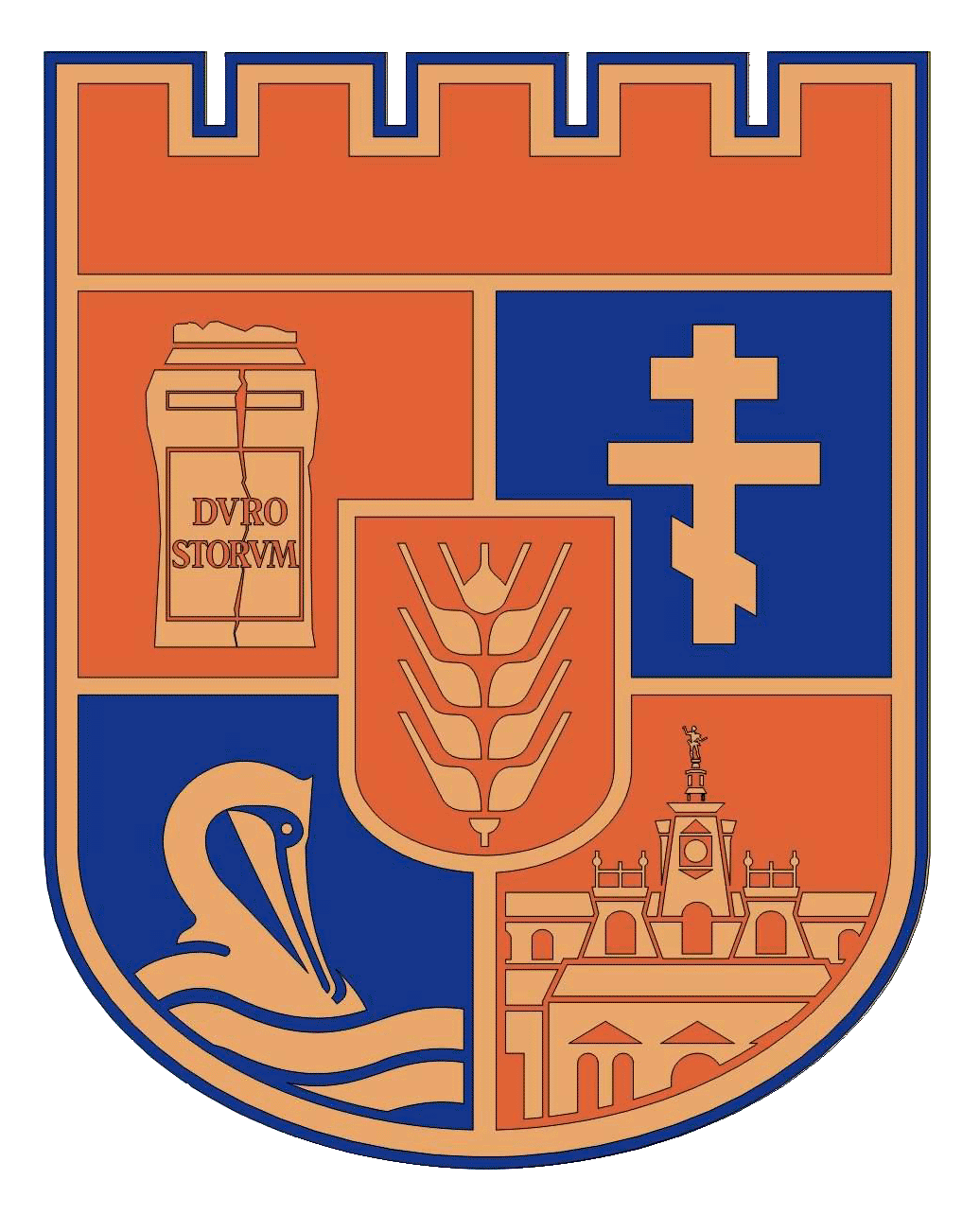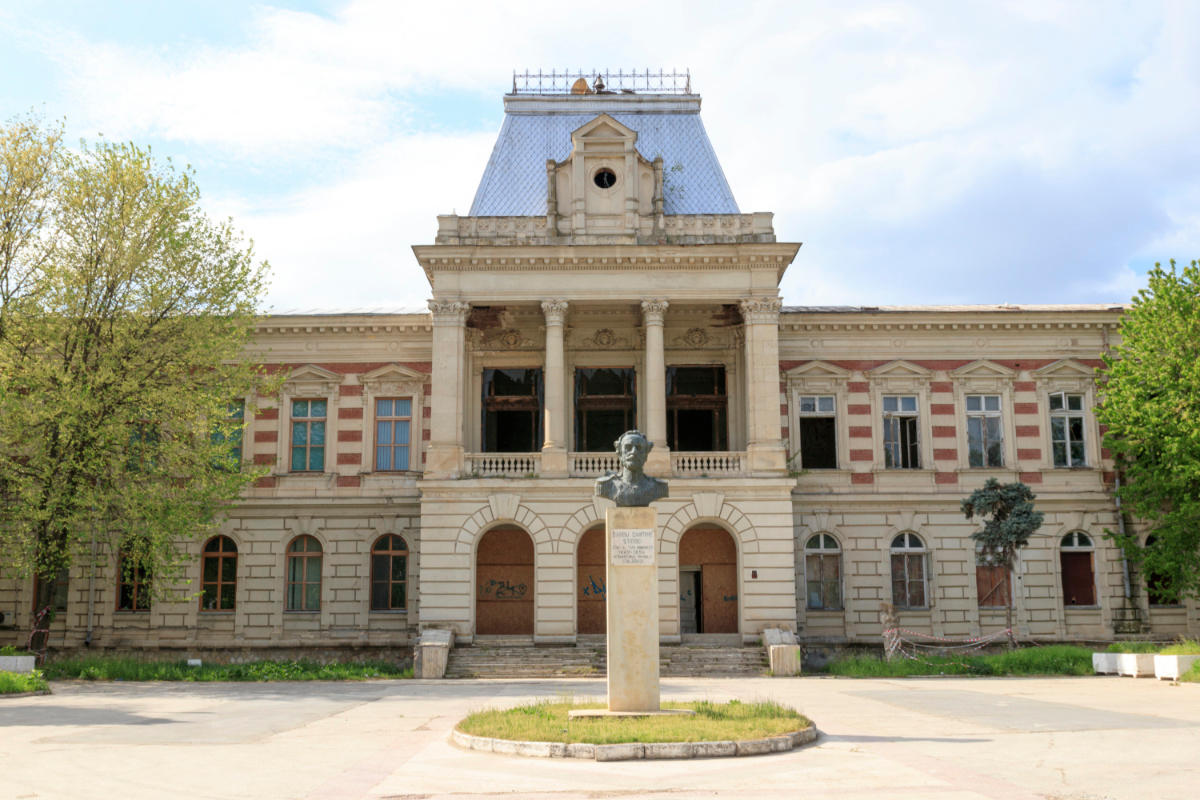Administrative Palace
Category CastleLOCATION
910001 Calarasi
DESCRIPTION
Built in 1898 by the Italian architect Giussepe Ciconi and meant to be the Prefect's Institution, the Barbu Ştirbei Administrative Palace has become, over time, an emblematic building of Calarasi county.
The building is built in neo-classical style, with concrete foundations, 42-50 cm thick pressed brick walls, high-profile shaped stone-molded base consisting of a partial basement, ground floor and top floor, raised bridge, wood and galvanized coverage. In spite of the damage suffered during the ages, it was impressive in its own age (Nicolae Iorga compared it to one of the great Bucharest hospitals on his first visit to Calarasi in 1910), impresses even today and will impress as long as it exists through its great architecture.[1]
On the opening date, January 21, 1898, the building consisted of 58 rooms and an area of 2517.63 square meters. It housed the main institutions of the Ialomiţa County between 1898-1952, the Calarasi district between 1952-1968, the Calarasi Municipality 1968 - 1981, the party and administrative institutions of the Calarasi county from 1981 to 1989 and following the revolution in December 1989, it started serving the purpose for which it was built – to be the Prefect's Palace.[2]
HISTORY
On July 19, 1891, the mayor of Calarasi, Gheorghe Dumitrescu, based on the Council decision of June 6, 1891, was authorized to sell the houses of the Ialomita County placed on Carol I Square in exchange for the sum of 20 000 lei, with the obligation for the county to use the space to build an Administrative and Judicial Palace and make a public park in the unoccupied space of the palace. Around the land, the county would have to leave unoccupied space of four meters that would serve as a boulevard and alley surrounding these constructions.
George Dimitrescu was a Romanian prose writer and columnist. Born in Ceptura, Prahova County, he attended high school in Bucharest from 1916 to 1925, and studied at the University of Bucharest's literature faculty, from which he obtained a degree in 1931. In 1933, he became a substitute teacher of Romanian at the military high school in Chișinău. In 1937, he began teaching at a trade school in Bucharest. He was later a civil servant within the "work and entertainment" section of the Labor Ministry. Dumitrescu's first published work was prose that appeared in Universul literar in 1928. He co-edited Pagini basarabene and Veac nou magazines. His work appeared in Cele trei Crișuri, Universul literar, Neamul românesc literar, Brazde adânci, România nouă literară, Telegraful, Adevărul literar și artistic, Revista Fundațiilor Regale and Gândirea. In 1933, he published La fetița dulce, a book of tales, and he was awarded the Romanian Writers' Society prize the same year. The monograph Viața și opera lui Leon Donici came out in 1936. He died in Bucharest and was buried at Bellu cemetery.[3]
The representative of the county, the chairman of the Permanent Committee, Gheorghe Nicolescu, accepted the sale-purchase at the price and conditions of the act, which he undertook to execute. The area of land was 26,999 m.p.
In 1894, the Ministry of the Interior had not yet ruled on holding the tender for the construction of the building.
The construction project was drawn up by the engineer Socolescu and the work, which also included the prefect's home (the former headquarters of the FORDOC Institute, ADR South Muntenia POSDRU) costed 488,825 lei. The construction was carried out by the Italian architect Giussepe Ciconi (who became a Calarasi citizen by marriage) - the same architect was responsible for two more city buildings: The Firefighters Academy and Girl School 2 (nowadays School No. 4). It was also supervised by architect Alexandru. Savulescu. The fundamental stone was put on the 11 June 1895 in the presence of M. Deşliu - General Secretary of the Ministry of the Interior. All the county and city officials attended the festivity.[4]
SITE SIGNIFICANCE
The palace is an emblematic building in Calarasi County
VISITOR INFORMATION
Working time: 10:00 – 16:30
OTHER INFORMATION
The Administrative Palace , built in 1898, is an architectural monument, one of the most prestigious buildings in Calarasi. From the very beginning, the building was designed to serve as an administrative and judging palace. The palace is located in the center of the city and is surrounded by a huge garden.
CLASSIFICATION
Historical site
[1] Palatul Administrativ al județului Călărași ruinat de nepăsarea autorităților guvernamentale
[2] DILEMA DECENIULUI- AL CUI ESTE PALATUL PREFECTURII?
http://www.soridapress.ro/dilema-deceniului-al-cui-este-palatul-prefecturii/
[3] https://en.wikipedia.org/wiki/George_Dorul_Dumitrescu
[4] DILEMA DECENIULUI- AL CUI ESTE PALATUL PREFECTURII?
http://www.soridapress.ro/dilema-deceniului-al-cui-este-palatul-prefecturii/




